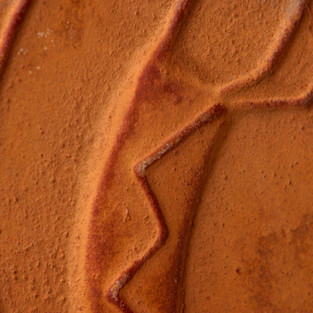History of Hues: Muted Clay
- Angela Boswell

- Mar 28, 2021
- 2 min read
Updated: May 31, 2022
Did you know that studies reveal that red is the most attractive color to both men and women? It is a color that evokes, power, beauty, and (of course) love.
But let's talk about a specific red, Muted Clay. So rich a hue and what a history! We believe that the mineral hematite is the most direct, natural pigment that would be used to create this color. It’s also an important color to the drape—look at our logo. We wanted to build a brand and look that was not only well designed but also rich with history.

The Beginning of Hematite
It is believed that people first started dyeing cloth between the sixth and fourth millennia B.C. Items that are stained deep red have been discovered and dated as far back as the Upper Paleolithic era, which was 50,000 years ago! In ancient Egypt, the Wah (a prolific scribe) was wrapped in hematite dyed cloth when he was mummified around 1957 B.C. The name is derived from the Greek word “haimatits,” which means blood-red. Ancient superstition held that large deposits of hematite formed from battles that were fought and the subsequent blood that flowed into the ground. You can look at historic cave paintings and see many uses of muted clay and shades of red.
Hematite
Today, hematite is one of the most abundant minerals on Earth's surface and located in the shallow crust. It is an iron oxide with a chemical composition of Fe2O3. Iron oxide, more simply put, is rust. The color range is vast with different shades of red, spanning from pink to a deep rich cayenne.
Why we love Muted Clay
Muted clay, like hematite, is a color abundant in nature. We are inspired by the shades that you can see in places like the Grand Canyon and Antelope Canyon. Colors that you see in nature are pleasing to our subconscious. As humans, we react to the color red because it is associated with life: celebration, sex, joy, death, and danger. This may be why the color has lasted and stayed strong for so long.
When it comes to design, we love to pair muted clay with indigo, white, and cream. We have two fabric options for you to discover:
The textured velvet comes in a luscious shade of muted clay. This is our Goldilocks fabric—not too shiny, not too matte. It’s a lovely color for any type of room, and it looks great with many colors.
The cotton canvas in muted clay is a classic fabric choice in a pop of color. It will never go out of style because it is crisp, classic, and durable.
How do you know if this color is right for you? Take a look around you. Are you surrounded by natural and earthy tones? Muted Clay is a warm, rich red color, so keep your neutral sofa and add some color to your windows! And if you need help, just ask.
Want to learn more about the history of hues? Check back for more info on the colors that shape our designs.
















Comments